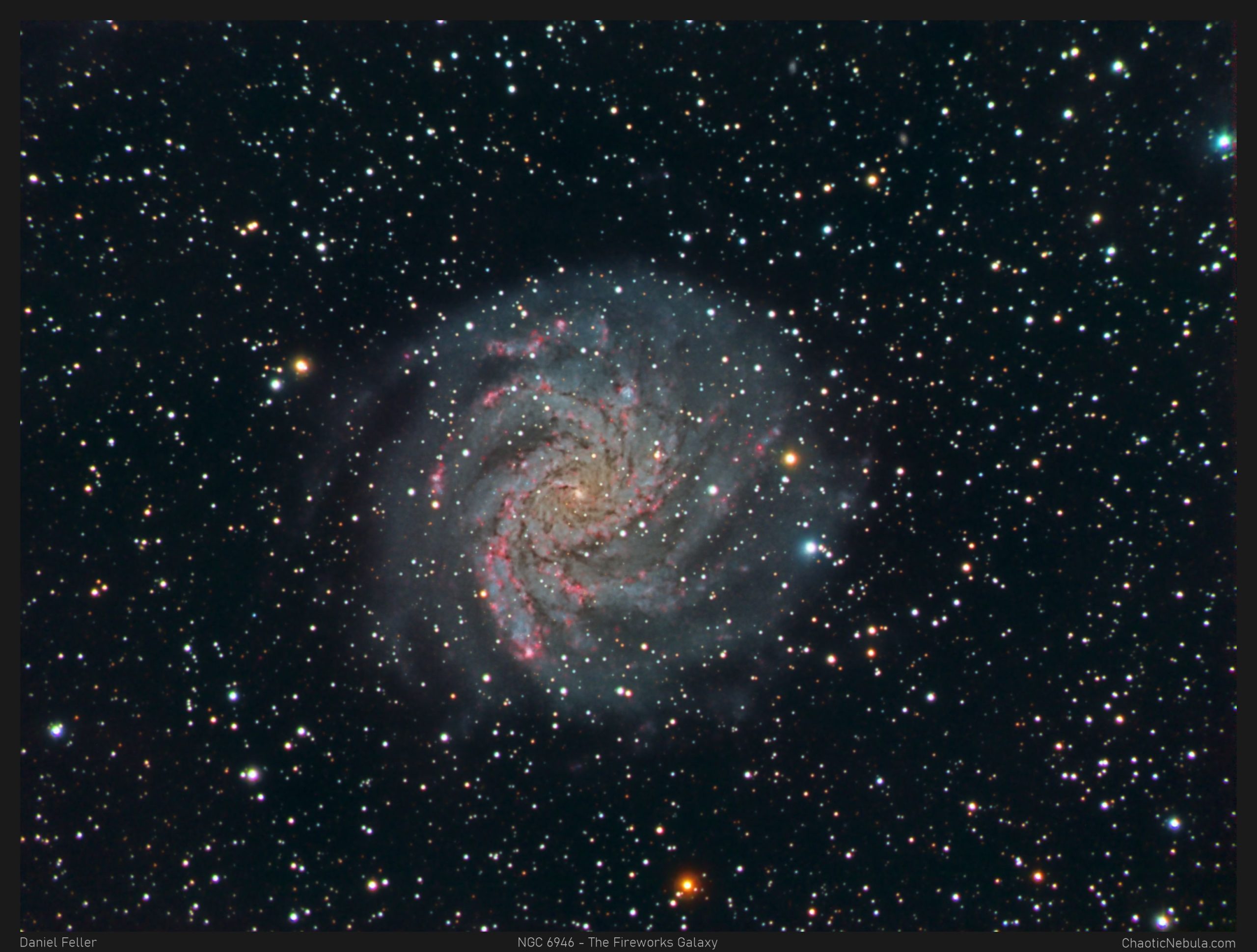NGC 6946 – The Fireworks Galaxy in Cepheus and Cygnus
The galaxy NGC 6946 is around 25 million light years away located on the boundary of the constellations Cepheus and Cygnus. The Fireworks Galaxy is about half the size of the Milky Way.
Upon closer inspection of the image, you will notice a strange bright spot located above and to the right of the galaxy core. At first, it looks like a flaw in the image, but it is actually identified as the Red Ellipse (appears blue in the image). This area could be a super bubble or a supernova remnant. As for now, it is still unknown.
(more…)


